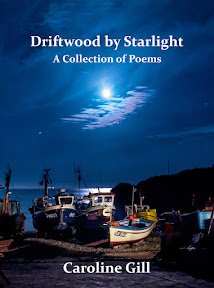 Left: Thalatta, thalatta
Left: Thalatta, thalattaI do not watch much television, but I have been enjoying Francesco da Mosto's
voyage through the Mediterranean, aboard the beautiful
Black Swan. David Bellamy's surprise appearance added a great sense of
je ne sais quoi to the programme on Corfu, and helped to bring us closer to the spirit of that other naturalist and conservationist, Gerald Durrell.
I am, however, particularly looking forward to the episode of
Francesco's Mediterranean Voyage on BBC2 tomorrow night at 8pm, in which the intrepid Venetian visits the little island of Spinalonga, once a colony for those with
leprosy.
I am about a third of the way through
The Island by Victoria Hislop, and have formed 'my' picture of Spinalonga (from her narrative); so it will be interesting to see whether the 'real' island matches the one in my mind. As someone who writes poetry, I am always fascinated by the reception of art. The viewer or the reader brings so much to the painting or the poem.
I have enormous respect for the work of
The Leprosy Mission. It is amazing to think that leprosy can be cured with modern medication. It is awful, though, to think that there are still many with the disease who lose sensation - and the vital warning signal of pain - in their lower limbs, and consequently develop ulcerous and infected wounds from accidents. The Leprosy Mission has developed special
footwear to help these patients.
Postscript: I have just come across the
ILEP site ('working for a world without leprosy'), which is well worth visiting. It comprises 14 non-governmental '
donor agencies', including TLM.
 I took this photograph in a bowl in the Preseli landscape some days ago, when we were having a picnic by a stream. I have tried to identify the orange mass, and it seems to me that it may be tremella mesenterica or yellow brain fungus. If you feel you want a closer look, click on the image to enlarge! If you can confirm the identification, I would be interested to hear.
I took this photograph in a bowl in the Preseli landscape some days ago, when we were having a picnic by a stream. I have tried to identify the orange mass, and it seems to me that it may be tremella mesenterica or yellow brain fungus. If you feel you want a closer look, click on the image to enlarge! If you can confirm the identification, I would be interested to hear.



























